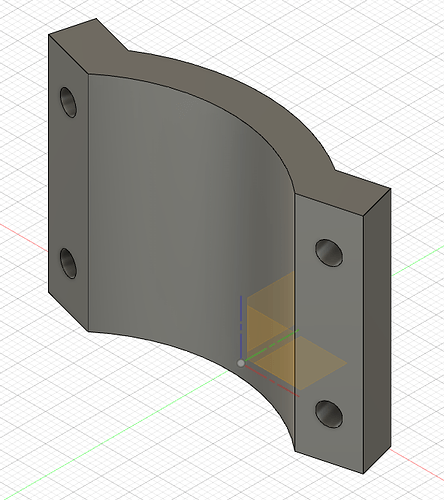I used the mesh to trace around and create my own mounting plate
Not sure if it fits yet as the printer is busy, I’ll print out later today and check it fits. If it does, I can then extrude out a volume to create an attachment plate.
If it all fits, I’ll upload the f3d file to here, github or thingiverse (blah!) for other people to use.
Rob
